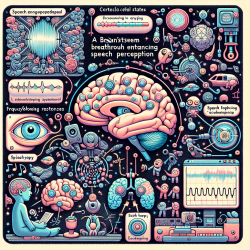Introduction to Rho GTPases in Neurological Development
The research article titled "Regulators of Rho GTPases in the Nervous System: Molecular Implication in Axon Guidance and Neurological Disorders" provides a comprehensive overview of the role of Rho GTPases in the nervous system. These small GTPases are pivotal in axon guidance, a process critical for the proper wiring of the nervous system during development. The failure of this process can lead to neurological disorders such as autism and Down syndrome.
Understanding Axon Guidance
Axon guidance is a crucial developmental process where neurons send out axons to reach their correct targets. This involves navigating through a complex environment, guided by molecular cues. The growth cone, a dynamic structure at the tip of the axon, responds to these cues, which include Netrins, Slits, Semaphorins, and Ephrins, to direct axon growth.
The Role of Rho GTPases
Rho GTPases, including RhoA, Rac1, and Cdc42, are integral to the regulation of the cytoskeleton within the growth cone. They influence the assembly and disassembly of actin and microtubule networks, which are essential for axon pathfinding. The balance of these activities is crucial for the correct guidance of axons.
Implications for Speech Therapy
Understanding the molecular mechanisms of axon guidance can significantly impact speech therapy practices, especially for children with neurological disorders. By targeting the pathways involving Rho GTPases, speech therapists can potentially enhance neuroplasticity and improve communication outcomes.
- Data-Driven Approaches: Utilizing insights from molecular biology can lead to more targeted therapy interventions.
- Personalized Therapy: Knowledge of specific molecular dysfunctions in patients can guide the customization of therapy plans.
- Enhanced Outcomes: Addressing the underlying neurological pathways can lead to more effective therapy outcomes.
Encouraging Further Research
While the current research provides a foundation, further studies are necessary to fully understand the potential therapeutic applications of manipulating Rho GTPases in speech therapy. Practitioners are encouraged to stay informed about ongoing research and consider collaborative efforts with neuroscientists to explore innovative therapy techniques.
Conclusion
The integration of molecular insights into speech therapy can revolutionize the field, offering new avenues for treatment and improved outcomes for children with neurological disorders. By focusing on the role of Rho GTPases, therapists can enhance their practice and contribute to the broader understanding of speech and language pathology.
To read the original research paper, please follow this link: Regulators of Rho GTPases in the Nervous System: Molecular Implication in Axon Guidance and Neurological Disorders.










